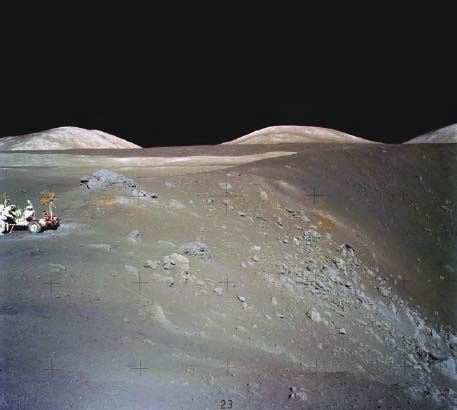Read Ancient Aliens on the Moon Online
Authors: Mike Bara
Ancient Aliens on the Moon (29 page)
Mechanical debris in Shorty crater.
Then my eye went to a large, box like object which seemed to have welded venting tubes all around the outside of it. I thought it looked a bit like a big mechanical turkey or even the torso of some formerly functioning device or junction box. I could even see a clevis or fit point at the front where something else might have been attached by a pin.
Richard noted all this, and then said “Look up.”
That’s when I saw it, just above the turkey-torso like object. Something that absolutely should not have been there. A head. A disembodied head in a crater. On the Moon. Data’s head.

More mechanical debris.
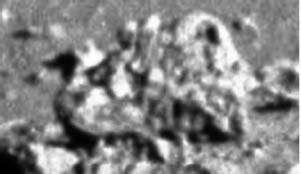
The “Turkey.”
To say
my
head exploded when I saw this object is to do the opening scene in the movie “Scanners” an injustice. I literally could not believe it. But after looking at photo after photo of it, each more intriguing and revealing than the next, I could no longer deny the reality of it, especially considering the extensive mechanical context it was found in. There was somebody’s head on the surface of the Moon. Or at least,
something’s
head on the surface of the Moon…
After a brief discussion, we were in quick agreement that neither this object nor anything else in Shorty crater could be of biological origin. The airless vacuum and harsh radiation environment would have long before broken down any kind of living tissue into dust. No, to have survived this long on the exposed lunar surface, this and everything else we were seeing had to be mechanical in origin. So it had to be something mechanical—a robot’s head. That mind blowing conclusion was only confirmed by color enhanced close-ups of what we were now calling “Data’s Head,” in honor of the android character from the dismal
Star Trek–The Next Generation
TV series.
You see, under color enhancement, it’s easy to see that Data’s Head has a bright red stripe painted on it. Obviously, that’s a feature most “rocks” don’t come with. The red stripe is plainly visible even without enhancement on several photos Schmitt took of the interior of Shorty crater, in spite of the claims by some critics that it isn’t really there, or can’t be reproduced.
As I looked at this undeniable mechanical artifact on the surface of the Moon, I kept thinking back to the episode of
Star Trek–The Next Generation
where the crew of the Enterprise finds the android lieutenant Data’s severed head in excavated ruins in San Francisco. Was this object somehow symbolically connected? Was this some artifact left by the Ancient Alien civilization that once flourished on Earth’s Moon? And if it was, did Schmitt and Cernan see it? And more importantly,
did they bring it back?
They certainly could have, as it is exactly the same size as a human head and would have fit into the sample bags fairly easily. The question of whether they had the off camera time to retrieve it is something else entirely.
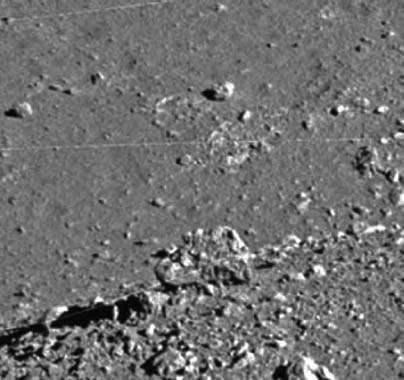
The interior of Shorty crater. Data’s head is at the top middle.
To be sure, they continued to have opportunities to retrieve ancient alien technology from the surface of the Moon even after Shorty crater and Data’s Head. There are photos from the third day and EVA-3 which also show what appear to be pumps, engines or some other kinds of mechanical debris scattered all over the Taurus-Littrow valley. Did they collect some of them and bring them back?
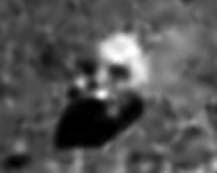
Composite close-up of Data’s Head.
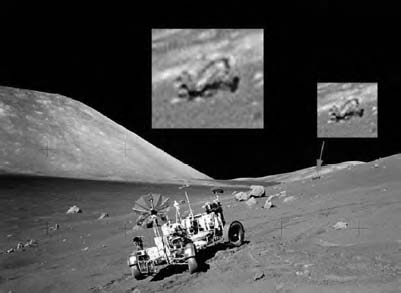
NASA frame AS17-140-21409.
In the end, all we know for certain about the Apollo 17 mission is that it was unusual in almost every way, from its landing site to the lack of photos of the interior of Nansen to the mysterious and still classified “Chapel Bell” experiment. But from the vantage point of 40 years in the past, it certainly appears that this mission was designed to investigate and retrieve technology left over from the Ancient Alien habitation of the Moon in the distant past. The question is, to what end?
1
http://history.nasa.gov/alsj/a17/a17pp-geosynth.pdf
2
http://www.hq.nasa.gov/alsj/a17/images17.html#20942
3
http://www.hq.nasa.gov/alsj/a17/a17.photidx.pdf
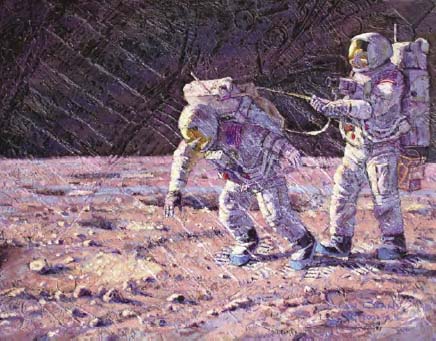
“Rock and Roll on the Ocean of Storms” by Alan Bean.

Clementine composite image of Tycho crater.

Apollo 16 astronaut John Young saluting the American flag on the surface of the Moon.

Enhanced color image of the crater Proclus from Earth-based telescope. Color variations and intensity are caused by bending of light through immense, glass-like lunar structures suspended over Mare Crisium region.
